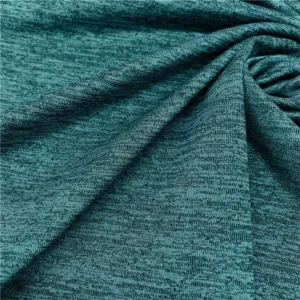Grease Fittings Basics: All You Should Understand for Proper Lubrication

Proper lubrication is critical to maintaining the longevity and performance of machinery and equipment. One of the unsung heroes in this process is the grease fitting. Understanding grease fittings, their types, functions, and maintenance can greatly improve how you manage lubrication tasks, reduce wear and tear, and prevent costly downtime. This article will guide you through everything you need to know about grease fittings to ensure effective lubrication in your operations.
What Are Grease Fittings?
Grease fittings, also known as Zerk fittings or grease nipples, are small metal fittings used in mechanical systems to apply lubricant under pressure directly into the bearing or moving parts. These fittings serve as access points for grease guns, enabling maintenance personnel to inject grease precisely where it is needed without disassembling the machinery.
The main purpose of grease fittings is to maintain a consistent flow of lubricant, reducing friction and protecting components against rust, corrosion, and premature wear.
Types of Grease Fittings
Understanding the different types of grease fittings helps you choose the right one for your machinery and application. Some of the most common types include:
1. Zerk (Straight) Fittings
These are the most common grease fittings, designed with a straight, threaded body that screws into the lubrication point. They provide easy access for grease guns and are widely used across various industrial and automotive applications.
2. Angle (90-degree) Fittings
These fittings are bent at a 90-degree angle, making them useful in tight spaces where a straight fitting cannot be accessed easily. Angle fittings ensure that grease can still be applied without disassembling parts.
3. Flush or Button Head Fittings
These fittings have a low-profile head, making them less likely to get damaged or snagged in environments where clearance is limited or where the fittings are exposed to rough handling.
4. Tapered or Extended Fittings
Tapered fittings allow for sealing without the need for additional washers, while extended fittings provide extra length to reach recessed lubrication points.
How Grease Fittings Work
Grease fittings operate as a one-way valve system. When a grease gun is attached and pressure is applied, the valve opens, allowing grease to flow through the fitting and into the bearing or joint. Once pressure stops, the valve closes to prevent dirt, water, or contaminants from entering.
Inside the fitting, a small ball bearing or check valve creates a seal that opens only under grease pressure. This ensures the lubrication is directed correctly, and no leakage occurs after greasing.
Importance of Proper Lubrication Through Grease Fittings
Proper use of grease fittings ensures that machinery components are adequately lubricated. This prevents friction and heat buildup that cause wear and failure. Regular lubrication through grease fittings leads to:
- Extended equipment lifespan
- Reduced maintenance costs
- Improved equipment efficiency
- Prevention of downtime due to unexpected breakdowns
- Protection against contaminants like dust and moisture
Ignoring grease fittings or improper lubrication can lead to premature bearing failures, shaft misalignment, and other mechanical issues.
How to Use Grease Fittings Correctly
Using grease fittings correctly involves several steps:
- Identify all lubrication points on the equipment and locate the grease fittings. Consult the equipment’s maintenance manual if necessary.
- Choose the right grease gun compatible with your grease fittings. Some grease guns fit better on certain types or sizes of fittings.
- Clean the grease fitting before use to avoid introducing dirt or debris into the bearing. Use a rag or brush to wipe off old grease and contaminants.
- Attach the grease gun securely to the fitting to prevent leaks during pumping.
- Pump grease until fresh lubricant appears at the bearing or joint. Avoid over-greasing as it can cause seals to burst or force grease out, wasting material.
- Remove the grease gun and wipe off any excess grease from the fitting and surrounding areas.
- Inspect fittings regularly for damage or clogging. Replace damaged fittings promptly to ensure continued lubrication.
Signs of Problems with Grease Fittings
It is important to be aware of signs indicating issues with grease fittings or lubrication points:
- Leaking grease around the fitting, which may indicate over-greasing or a damaged seal.
- No grease coming out of the fitting during lubrication, which can signal a clogged fitting or blocked passage.
- Corrosion or damage to the fitting, affecting the seal and grease delivery.
- Excessive noise or heat from the bearing, indicating insufficient lubrication.
Regular inspection and maintenance of grease fittings help prevent these issues.
Maintenance Tips for Grease Fittings
Maintaining grease fittings is straightforward but essential:
- Always keep fittings clean and free from dirt or corrosion.
- Replace damaged or clogged fittings immediately to maintain lubrication flow.
- Use dust caps to protect fittings in harsh environments.
- Train maintenance personnel on proper greasing techniques.
- Use quality grease compatible with the equipment specifications.
Why Quality Grease Pumps Matter
The effectiveness of grease fittings largely depends on the quality and reliability of the grease pumps used to apply lubricant. Using high-quality grease pumps ensures steady pressure, consistent grease flow, and ease of use. This reduces the risk of over-greasing or under-greasing and prolongs equipment life.
For industrial applications, it is crucial to invest in grease pumps designed for durability and performance under heavy use.
Final Thoughts on Grease Fittings
Grease fittings are simple yet vital components in any lubrication system. Knowing their types, proper use, and maintenance will help you maximize the efficiency and lifespan of your machinery. With correct lubrication techniques, including the use of quality grease pumps, your equipment can perform optimally and avoid unnecessary downtime.
Business Name: IsoHiTech
Phone: +86-13814034409
Email: yaoqingpu@isohitech.com
Address: 120 Kingsway, Suit 2808 Burnaby NY
Country: USA






